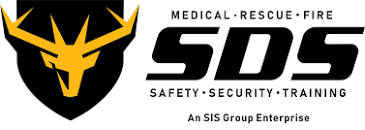This course provides participants with the skills and knowledge to safely combat incidents involving hazardous materials. It involves identifying, containing, and rectifying hazardous material leaks and spills, conducting emergency rescues of casualties, setting up and maintaining Hazmat safety zone

This course provides participants with the skills and knowledge to safely combat incidents involving hazardous materials. It involves identifying, containing, and rectifying hazardous material leaks and spills, conducting emergency rescues of casualties, setting up and maintaining Hazmat safety zone, working in and leading small teams of emergency responders.
This course requires participants to spend long periods of time in Breathing apparatus as well as Splash and Gas suits. These Hazmat suits enclose the entire body and face and can be quite confining.
Trainers will work with learners to ensure they are comfortable with the operation and dressing procedures of these suits before committing them to wearing them.
Wearing and working in these Hazmat suits can cause heat stress on the body, therefore, all learners are required to have a basic level of fitness, be clean shaven, be well hydrated before and throughout the course.
Learning Outcomes
The course covers the following topics:
Selection, use and maintenance of breathing apparatus equipment including pre-donning checks and tests
Identify and handle hazardous materials.
Assist with establishment and hazard control and decontamination zones.
Contain and recover hazardous materials.
Assist with decontamination of personnel and equipment.
Select and don protective clothing.
Don and test protective equipment.
Work in area of operations.
Entry Requirements
Participants must:
Be clean shaven to ensure facial seal of respirators as per AS/NZS 1715
Provide photo I.D on entry
Unless exempt, provide a verifiable USI number
Be physically fit and healthy with capacity to perform manual tasks
Be able to read, write, communicate orally, and understand and interpret complex information and situations
Interact with others and work under pressure
Dress appropriately i.e., long sleeve, long pants or overalls, safety boots/closed in shoes, safety glasses
Please ensure you read our Student Handbook for further information on our policies, procedures, terms, and program conditions. If you are unsure if you require learning support, SDS can provide access to a LLN assessment that identifies if any learning support is needed.
Please ensure you inform the training team on registration, if you fail to inform the training team at registration, learning support may not be available on the day of training.
Founded in 2004, Safety Direct Solutions Pty Ltd (SDS) is a Registered Training Organisation (RTO #51632) and a leading provider of industrial safety, fire, rescue and medical training and emergency services personnel in the Australasian region.
Today SDS is owned by SIS Limited, one of Asia – Pacific’s largest security personnel company. SIS provides security, facility management and cash logistics services, which are essential to the functioning of a vibrant and healthy economy and are a trusted leader across these business segments in India and other geographies in the Asia – Pacific region.
SDS has an extensive background and experience in supplying turnkey solutions in Critical Risk Management Teams, Security, Training and Medical Services, across a range of industries, including Energy, Mining, Infrastructure, Government, Defence and Entertainment industries.
The SDS team is comprised of professional emergency response personnel from local, international, military, and civilian backgrounds.
SDS has operations in Western Australia, Northern Territory, Queensland (Cairns), New South Wales and New Zealand. SDS operates a purpose-built Centre of Excellence in Balcatta, Western Australia and Winnellie, Northern Territory.
The Centre of Excellence has a wide variety of portable training equipment that can be used either in the centre or for site-based training. SDS also operates a fleet of emergency response vehicles.
SDS set the benchmark in Australia for excellence in safety training and emergency management. Our people have extensive industry experience, and we train them to an even higher standard, where our clients can depend on them to respond to and effectively manage any emergency situation.
SDS’ approach to projects are to Achieve Excellence and deliver the highest standards of clinical care in the environments in which we operate, through a combination of multinational emergency response personal, local knowledge and an integrated global clinical governance, training and medical supply.
© 2025 coursetakers.com All Rights Reserved. Terms and Conditions of use | Privacy Policy